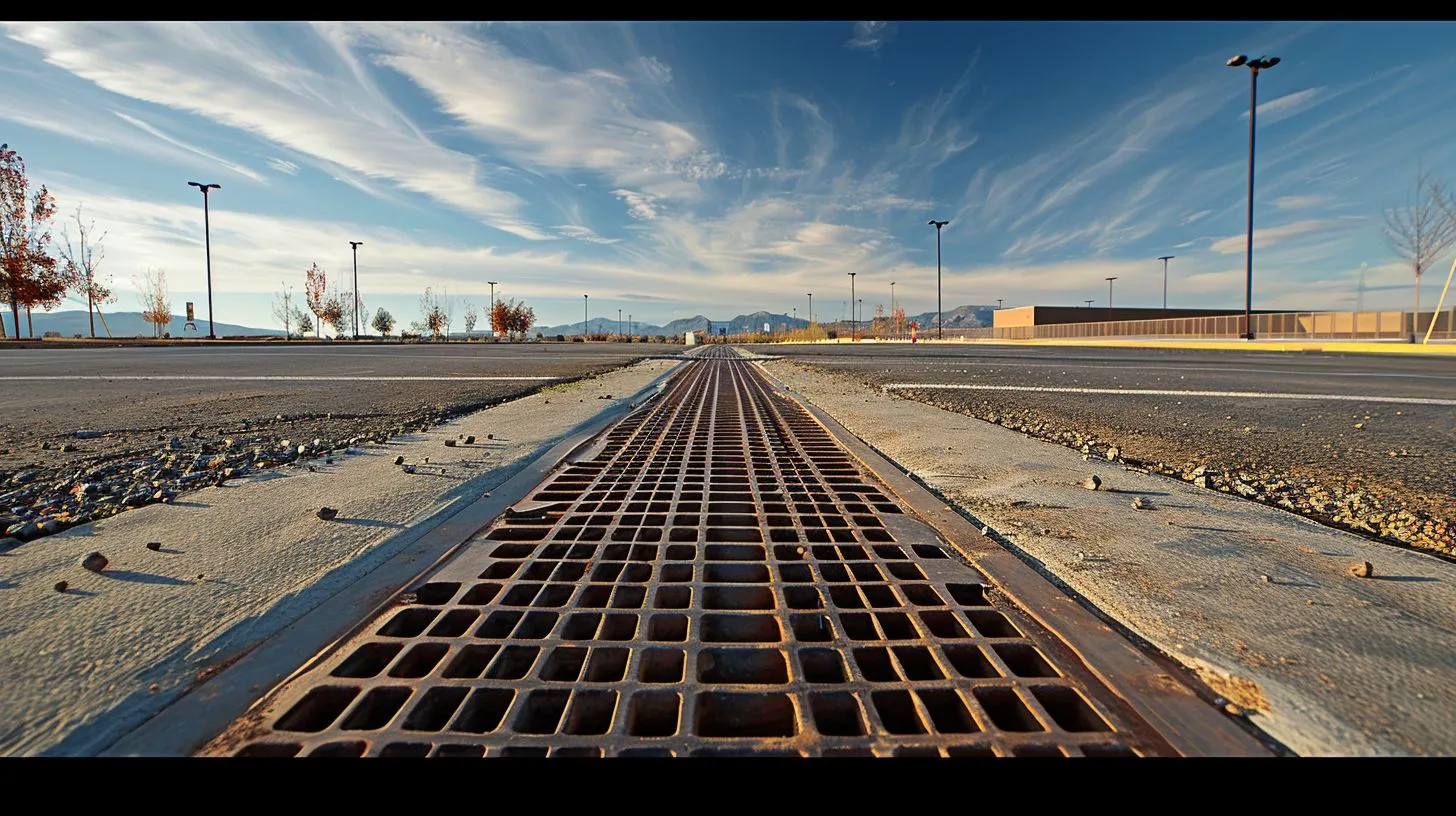
Are you facing water drainage challenges in your commercial space? We can help you with the struggle. We have also discovered that commercial trench drains can improve water drainage and systems.
Here, we’ll discuss how these trench drain systems can tackle common water flow issues and how many gallons can efficiently manage standing water.
Key Takeaways
- Commercial trench drains prevent flooding and soil erosion by catching, collecting, and carrying water away.
- Various commercial trench drains are available, including linear, precast concrete, slot drains, polymer concrete, and fiberglass. Each type serves different needs based on the property and industry requirements.
- Installing a trench drain requires specific steps to ensure proper placement and securing for maximum functionality. Regular maintenance, such as cleaning debris, ensures these systems work well.
- Choosing the correct type of trench drain depends on factors such as load capacity and exposure to elements. This choice is crucial for efficient water management in commercial spaces.
- Trench drains enhance drainage systems by effectively managing standing water, reducing slip hazards, and protecting property foundations from water damage.
Exploring Commercial Trench Drains
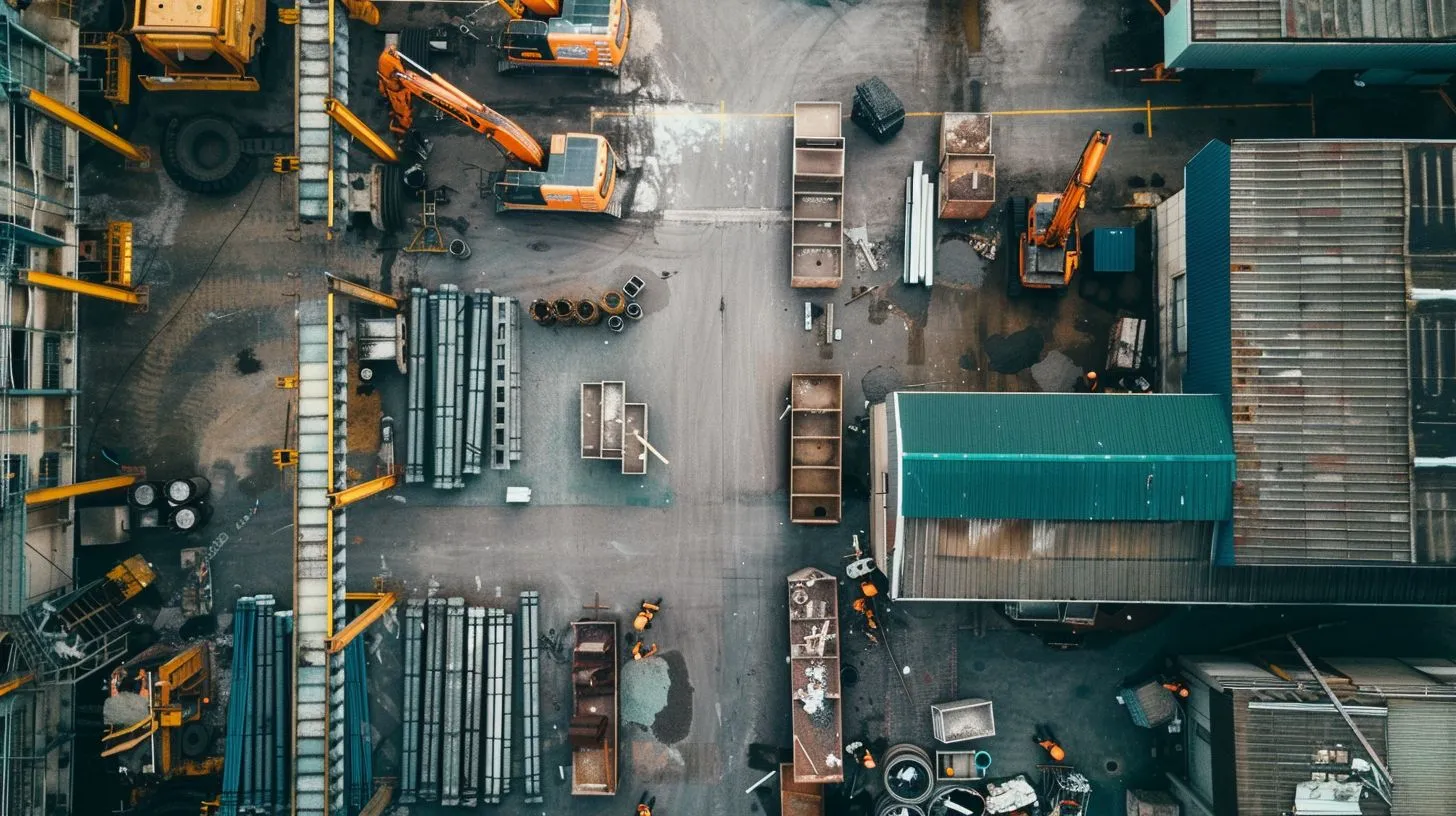
Experience the world of commercial trench drains and the various types of drainage solutions and benefits. Understand how these drainage solutions can enhance water flow and effectively manage standing water.
Definition of commercial trench drains
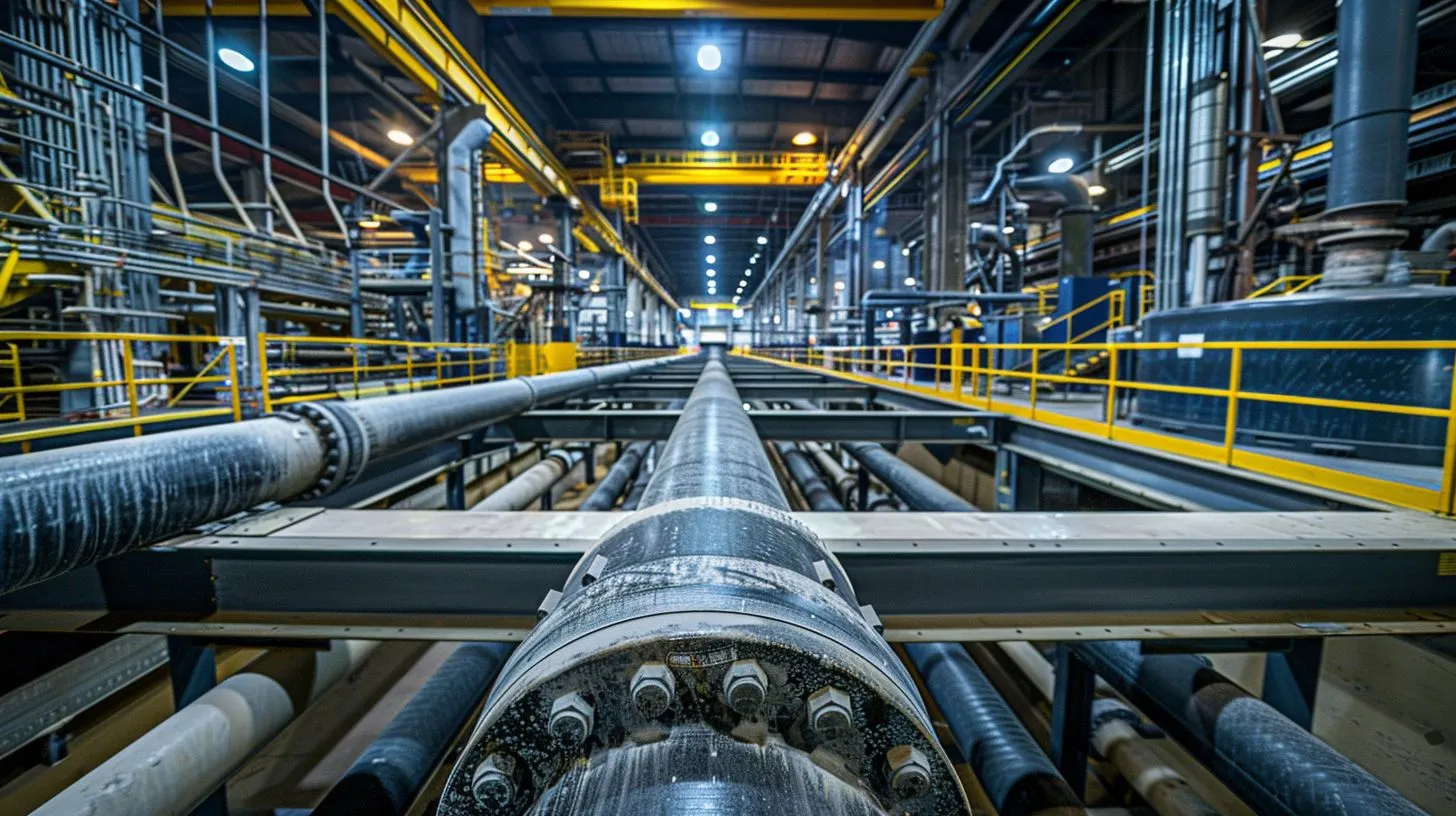
Commercials must install trench drains, which are key for water management in various settings. They catch, collect, and carry water from one area to another, helping keep properties safe from excess water damage.
You can find different types, such as cast-in-place, pre-cast concrete, and slot drain systems. These drains are vital in protecting areas against flooding and soil erosion.
We ensure every commercial establishment is equipped with the right trench drainage system.
These systems are designed for heavy-duty use in loading docks and industrial facilities. Made from durable materials such as polymer concrete or galvanized steel, they can handle large volumes of water.
Choosing the right type of trench drain depends on specific needs, including load capacity, exposure to chemicals, or frequent heavy rainfall.
Varieties of commercial trench drains
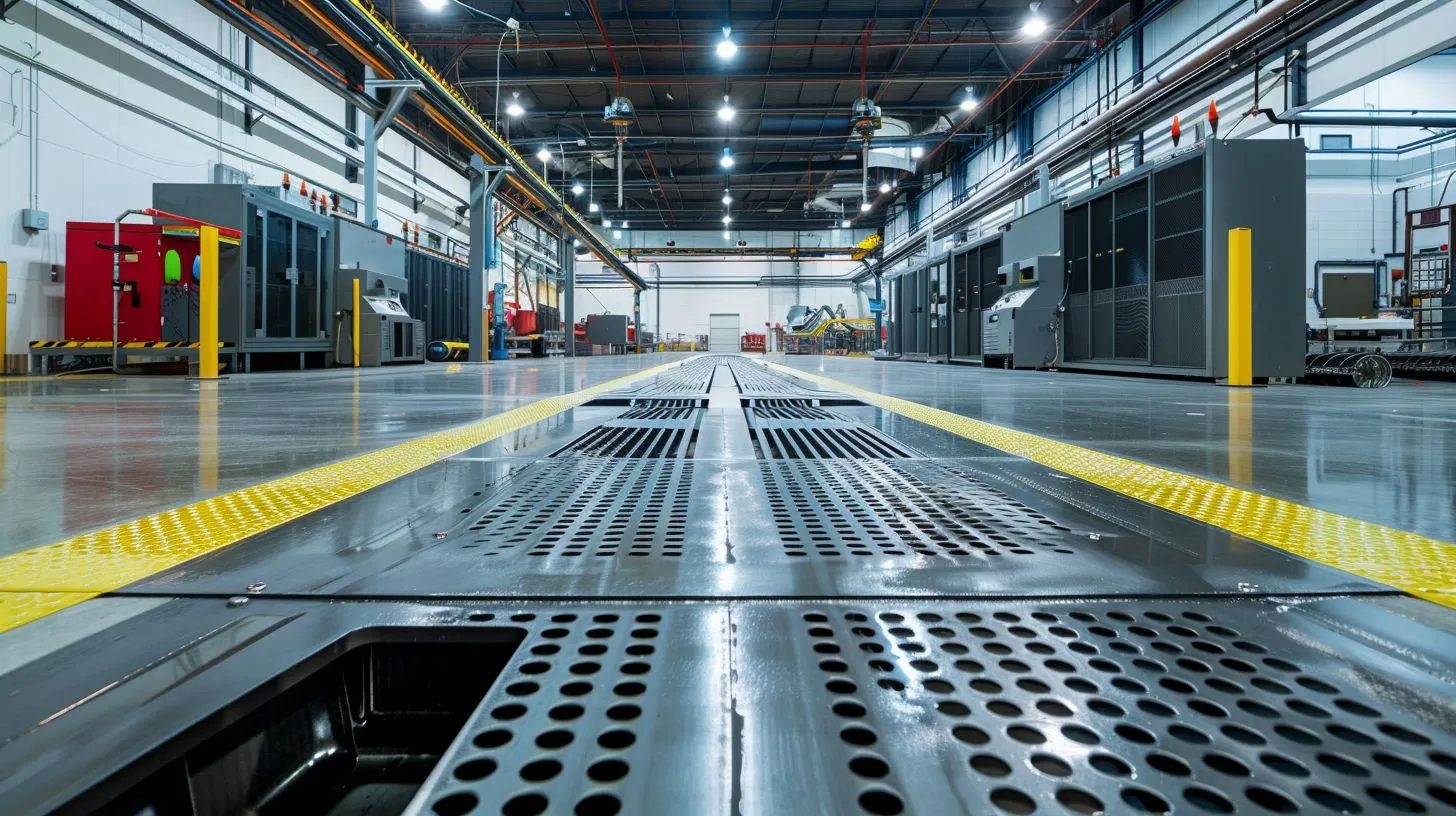
We understand how crucial it is to have the proper drainage system, especially for those with commercial properties in California. Choosing the correct type of commercial trench drain can significantly impact your property’s water management and structural integrity. Here’s a look at the different varieties available:
- Linear Drains are long, narrow channels guiding water toward designated catch basins. They are ideal for managing surface water flow across large flat areas like parking lots and pool decks.
- Precast Trench Drains: Made from preformed or polymer concrete, these drains are known for their durability and load-bearing capacity. Precast options speed up installation since they’re ready to place immediately.
- Slot Drains: This type features a slim slit on the surface instead of a grate, making them less visible and an excellent choice for modern commercial spaces where aesthetics matter as much as function.
- Polymer Concrete Drains: These combine polyester resins with aggregate fillers to create drains that offer exceptional strength, chemical resistance, and longevity—perfect for industrial environments like food processing or drug manufacturing facilities.
- Fiberglass Trench Drains: Lightweight yet strong, fiberglass drains resist corrosion well. They work great in environments exposed to harsh chemicals or high moisture levels.
- Application Specific: Cast iron ensures heavy-duty performance under heavy vehicle traffic, while stainless steel withstands corrosion and extreme temperatures without rusting or degrading.
- Grate Options: Grates are available in ductile iron, stainless steel, or plastic for different aesthetic appeals and load requirements. Specialized grate materials, like heel-proof grates, provide safety by preventing shoes from getting caught.
Selecting the appropriate trench drainage system involves considering factors like load capacity, grate material, covering quality, and the amount of water that needs to be managed. We always match the system to your specific requirements, whether managing rainfall on a parking lot or ensuring a food production line stays dry and sanitary.
Advantages of using commercial trench drains
We use commercial trench drains to prevent flooding and erosion in outdoor areas like driveways and patios. They also reduce the risk of slip-and-fall accidents. Our trench drains come in various sizes, materials, and shapes, perfect for different needs.
Whether the surface is sloped or flat, these drains work well everywhere. Common spots for these drains include parking lots, loading docks, and outside industrial buildings. They also benefit inside places like garage floors and kitchens.
Choosing the right concrete drain system matters a lot. It can better handle water flow, protect the soil from washing away, and keep standing water under control. Concrete trench drains are famous for their strength and the weight they can bear without frequent repairs.
Understanding these benefits is crucial for those looking at options in California to improve flooring with epoxy or concrete solutions before proceeding to installation steps.
Benefits of Commercial Trench Drains in Drainage Systems
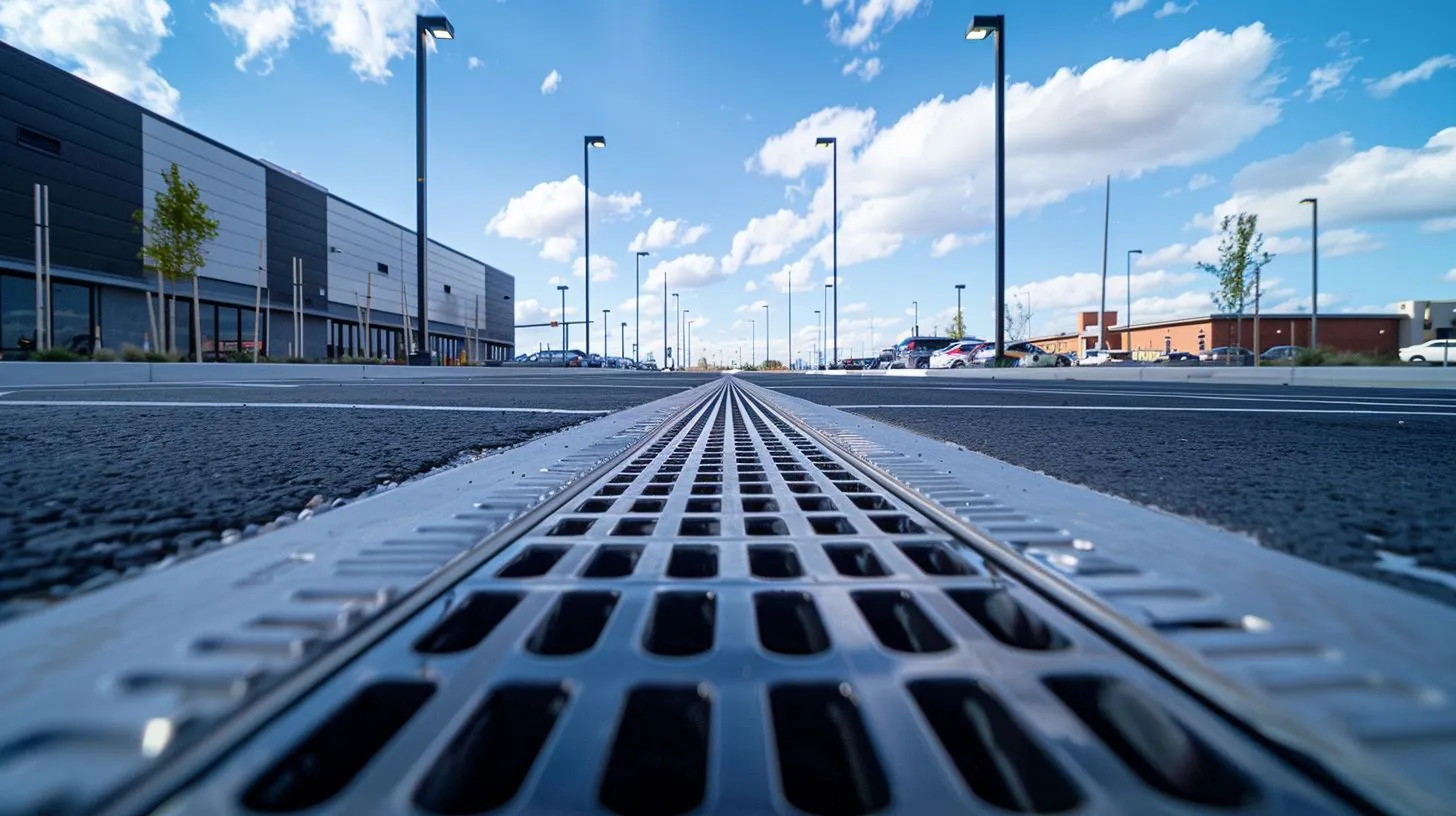
Enhancing water flow and managing standing water are key benefits of commercial trench drains that enhance drainage systems. Properly selecting the appropriate trench drainage system is crucial for mitigating soil erosion and maintaining a sound drainage system.
Enhancing water flow
Enhancing water flow is crucial for a proper drainage system, allowing efficient surface water management. Using commercial trench drains, we can effectively control and redirect the water flow, preventing pooling and potential flooding in the surrounding area.
Accurate calculation of the flow rate is essential to ensure that the trench drain system can handle the anticipated volume of water.
The right drain system will enhance water flow and accumulation, maintaining commercial properties’ structural integrity and safeguarding against soil erosion and standing water issues.
Choosing a suitable trench system for drainage is pivotal as it directly impacts how efficiently it manages water flow and prevents drainage problems. We at Extreme Industrial Coatings can help you choose the drainage solutions.
Efficiently managing surface water is crucial for maintaining a safe environment around your property.
Mitigating soil erosion
Mitigating soil erosion is crucial for preventing landscape damage and protecting the foundation of our properties. It is pivotal in regions prone to heavy rainfall or high water tables.
By directing excess water away from the property, we prevent floods, swamping, and potential devastation caused by soil erosion. This not only safeguards the surrounding landscape but also ensures the longevity of our property.
Furthermore, mitigating soil erosion helps prevent water from the deep foundation from washing away soil and damaging the landscape, which could otherwise result in frequent repair needs and decreased load-bearing capacity of deep foundations.
These impacts are especially pertinent for commercial establishments with parking areas as they deal with drainage issues that lead to stagnant water accumulation. Ultimately, by managing standing water effectively through appropriate trench drain systems, we can successfully mitigate the adverse effects of soil erosion on our properties.
Managing standing water
Commercial facilities must have trench drain systems that effectively handle pooled water when transitioning from mitigating soil erosion to managing standing water. Implementing the right trench drain system allows us to prevent damage and hazardous situations caused by standing water.
Trench drains are vital in food processing, drug manufacturing, and beverage production. They ensure that liquid spills and runoff are efficiently managed.
Utilizing channel drains can significantly enhance drainage systems, optimize water flow, and address concerns about managing standing water.
Selecting the appropriate trench drain system
When selecting the appropriate drainage system, it’s vital to consider the specific requirements of your drainage needs. Factors like water flow rate, surface material, and potential debris should guide your choice.
Linear drains work exceptionally well with epoxy and concrete flooring, managing water effectively while enhancing the area’s overall aesthetic appeal. Precast trench drains are ideal for heavy-duty applications due to their durability and capacity to handle substantial water volume without compromising efficiency.
It’s important to contemplate the design and ensure that any chosen concrete drain system seamlessly integrates with existing floor compositions. This seamless integration helps harness the full capabilities of commercial trench drains to enhance drainage systems while minimizing maintenance demands.
Consider factors like load class ratings, grating options, and outlet configurations before deciding which type would be most suitable for your unique flooring setting.
Installation and Maintenance of Commercial Trench Drain Systems
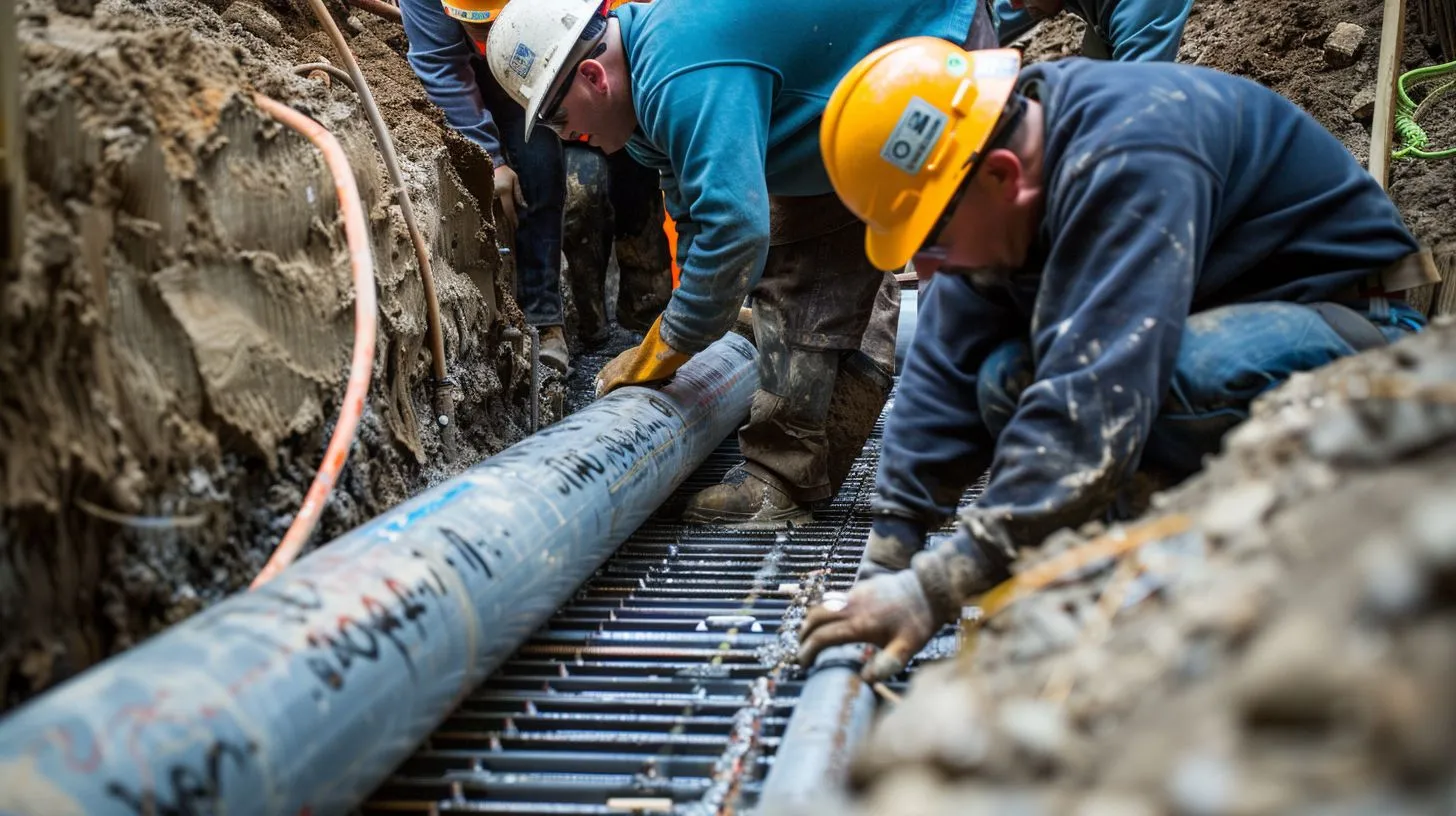
Installing commercial trench drains involves precise steps to ensure effective drainage. Proper placement and securing are crucial for maximum functionality. Regular maintenance and cleaning routines, including troubleshooting common issues as they arise, are essential for the longevity of installing trench drains and drain systems.
Steps in the installation process
To install a trench and place a concrete drain system, the process involves several steps as outlined below:
- Determine the trench size based on the project requirements and load class specifications.
- Calculate the trench depth to ensure it meets load class standards and suits the specific drainage needs.
- Use marking paint to clearly outline where the trench will be situated, ensuring accurate placement.
- Gather tools such as a spade, hammer, caulk gun, and level for excavation and preparation.
- Excavate the designated area according to the determined size and depth of the trench, ensuring uniformity and precision in the layout.
- Install any necessary substrate or base material to provide a stable foundation for the trench drainage system.
- Place concrete or precast drain channels securely within the excavated area, aligning them properly for adequate water flow.
- Test the installed trench by filling it with water to verify proper functionality and identify any necessary adjustments.
- Once tested and approved, complete installation by securing all components for long-term durability.
By following these steps meticulously, one can ensure the successful installation of a commercial drain system tailored to the site’s specific drainage system requirements.
Guidelines for placement and securing
To ensure proper placement and securing of commercial trench drains, consider the following guidelines:
- Choose a location that strategically captures water flow.
- Ensure proper alignment and connection of trench drain channels to direct water toward the outlet or catch basin.
- Secure end caps, grates, and other components to prevent dislodging or shifting.
- Select materials based on load-bearing capability and expected water flow rates.
- Use installation accessories such as anchors and fasteners for secure placement.
These guidelines are essential to maximize the effectiveness of commercial trench drains in enhancing drainage systems.
Maintenance routines and cleaning tips
Here are the detailed maintenance routines and cleaning tips:
- Clean the trench drain regularly by removing debris or sediment buildup to prevent clogging and maintain optimal water flow.
- Inspect and remove any trapped material from the drain grates to ensure free passage of water into the drainage system.
- Use a high-pressure water hose to flush out any remaining debris or pollutants stuck within the drains to keep them clear and functional.
- Apply appropriate cleaning solutions to eliminate grease, oil, or other residues that may accumulate in the drains, ensuring efficient water management.
- Perform routine inspections of the trench drain components for damage or wear, repairing or replacing them as necessary to maintain proper functionality.
- Utilize specialized equipment, such as drain snakes or air pressure guns, to thoroughly clean hard-to-reach areas in the trench drains.
- Implement preventive measures such as installing sediment traps or catch basins to reduce the amount of debris entering the drainage system.
These steps will help ensure that your commercial trench drains operate effectively and maintain optimal performance for enhanced drainage systems.
Troubleshooting common issues in trench drains
Understanding and resolving common issues with trench drains is crucial to efficient functioning. Here are possible problems and troubleshooting steps:
- Clogging: Debris and sediment accumulation can hinder water flow.
- Solution: Regular cleaning using a high-pressure washer or drain snake can effectively clear the clog.
- Corrosion: Exposure to chemicals or acids may cause rust and deterioration of the trench drain.
- Solution: Protective coating or investing in stainless steel trench drains can prevent corrosion.
- Uneven Water Flow: Inadequate slopes or blockages can lead to uneven drainage distribution.
- Solution: Adjusting the slope or removing obstructions ensures even water flow.
- Foul Odors: Organic matter buildup in stagnant water can create unpleasant odors.
- Solution: Installing odor-resistant grates and regularly flushing the trench drain with water-containing enzymes helps eliminate odors.
These troubleshooting measures will ensure the optimal functionality of the trench drain systems, supporting an effective channel drain system for your commercial space’s flooring needs.
Conclusion
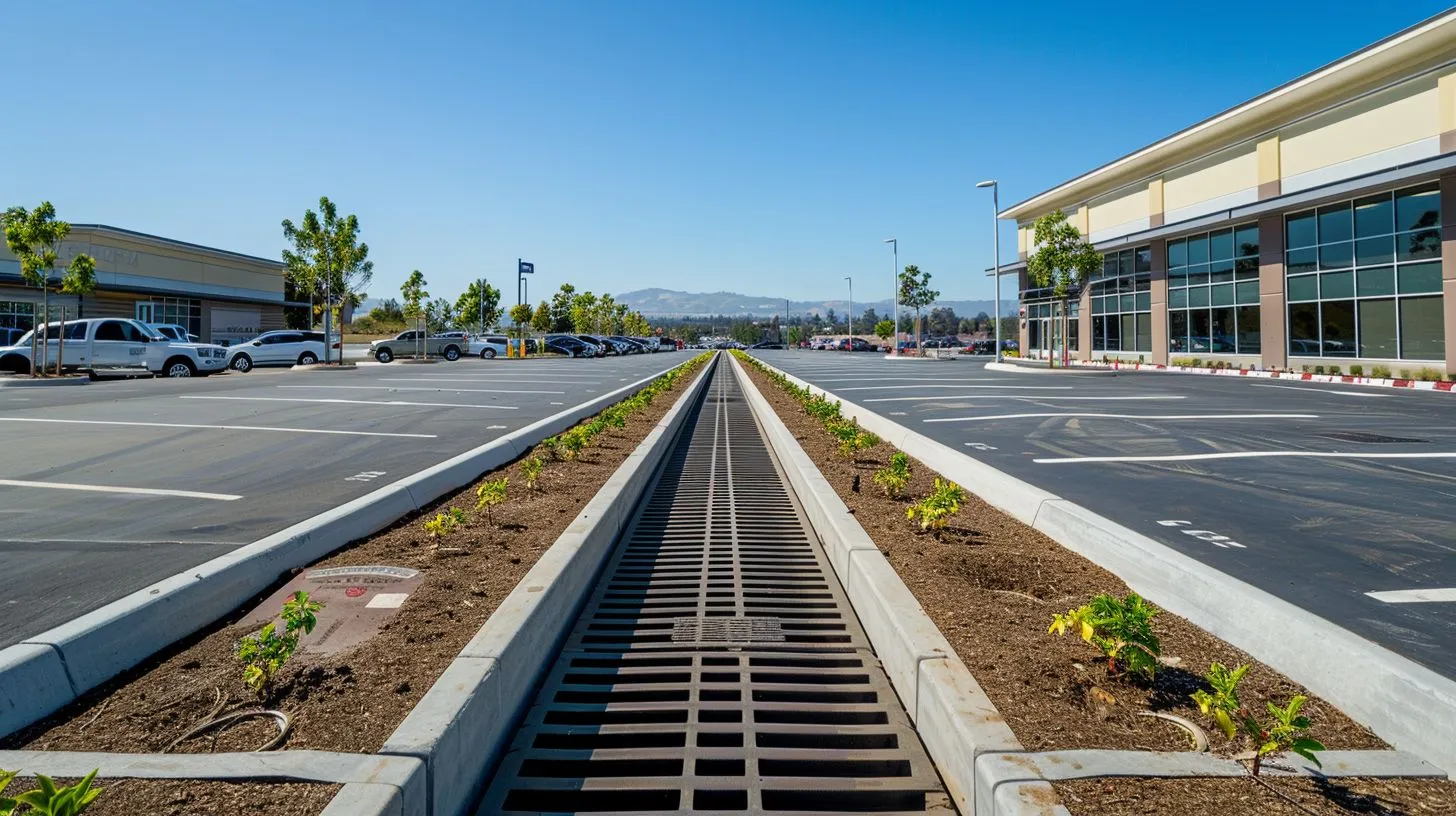
In conclusion, commercial trench drains are essential for enhancing drainage systems. They effectively manage standing water and mitigate soil erosion, contributing to efficient water flow.
Selecting the appropriate trench drain system is crucial for maximizing the many benefits of trench bottom. Proper installation and maintenance ensure the long-term functionality of these drain systems, making them indispensable tools for managing water runoff efficiently.
FAQs
Contact Extreme Industrial Coatings today for 20+ commercial construction services we offer across California.







Leave A Comment